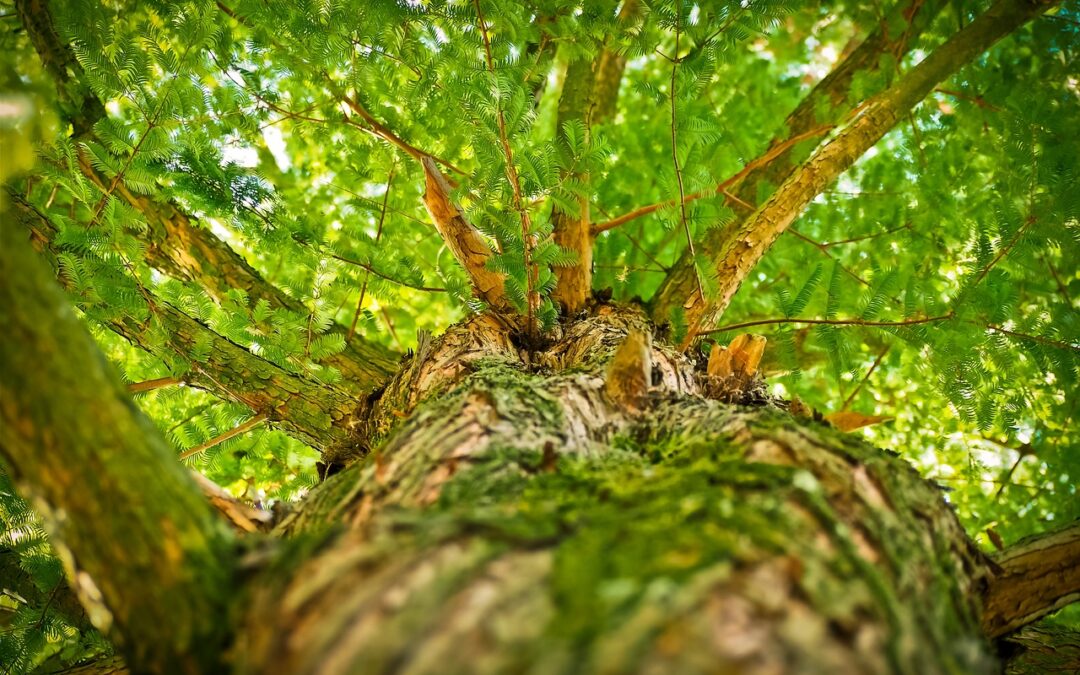The boundless tapestry of nature never ceases to amaze us, as exemplified by the awe-inspiring revelations we have unearthed regarding the myriad creatures that inhabit our world. From the unfathomable velocity of the cheetah to the masterful finesse displayed by bowerbirds, these captivating beings incessantly stimulate our imagination with their exceptional attributes. As we venture further into the enigmatic realm of the animal kingdom, we become acutely aware of the sheer extraordinariness and intricate interconnectedness that permeate life on this wondrous planet. Let these mesmerizing tidbits of knowledge kindle the flames of your inquisitiveness, fostering an ever-deepening appreciation for the bewildering marvels that envelop us.
Table of Contents
- The tongue of a blue whale is so large that 50 people could stand on it.
- A group of flamingos is called a “flamboyance.”
- Cows have best friends and can become stressed when separated from them.
- The probosci’s monkey has the largest nose of any primate.
- The lyrebird can mimic a variety of sounds, including chainsaws and camera shutters.
- Elephants are capable of recognizing themselves in a mirror.
- The pistol shrimp can create a cavitation bubble that reaches the temperature of the sun.
- Goats have rectangular pupils, which provide them with a wide field of vision.
- The tuatara, a reptile from New Zealand, has a “third eye” on its forehead.
- Pigeons can distinguish between different artistic styles and even recognize specific paintings.
- Bees can recognize human faces.
- Some ants keep “cattle” and “milk” them for a sugary substance.
- The whip spider can feel vibrations in the air using its long, whip-like front legs.
- Cheetahs can go from 0 to 60 miles per hour (0 to 97 kilometres per hour) in just a few seconds.
- The male bowerbird builds intricate and decorated structures called bowers to attract mates.
- Octopuses have the ability to change both the colour and texture of their skin to camouflage and communicate.
- Hummingbirds have the highest metabolism of any animal.
- The axolotl, a type of salamander, can regenerate lost body parts, including limbs, spinal cord, and even parts of its heart and brain.
- The bombardier beetle can produce and release a boiling hot chemical spray as a defence mechanism.
- The archerfish shoots down prey by spitting a stream of water with remarkable accuracy.
The tongue of a blue whale is so large that 50 people could stand on it.
Details: Blue whales, the largest animals on Earth, have tongues that can weigh as much as an elephant. They use their massive tongues to consume thousands of pounds of tiny shrimp-like creatures called krill in a single gulp.
How it was discovered: Researchers have studied blue whales extensively, observing their feeding habits and analyzing the anatomy of their tongues.
A group of flamingos is called a “flamboyance.”
Details: When flamingos gather together, whether, for feeding or breeding, they form a striking group known as a “flamboyance.” These gatherings can consist of thousands of birds, creating a breathtaking spectacle of vibrant pink feathers.
How it was discovered: The collective noun “flamboyance” is derived from the French word “flamboyant,” meaning showy or extravagant, which perfectly describes the visual display created by a group of flamingos.
Cows have best friends and can become stressed when separated from them.
Details: Cows are social animals that form strong bonds with their companions. Studies have shown that when cows are separated from their preferred companions, they can experience increased heart rate and stress levels. These findings highlight the emotional intelligence and social nature of cows.
How it was discovered: Research conducted on cow behaviour and social dynamics, including observations of their reactions to separation from preferred companions, provided insights into their social bonds.
The probosci’s monkey has the largest nose of any primate.
Details: The probosci’s monkey, native to Borneo, possesses an incredibly large and distinctive nose. In males, the nose can grow up to 7 inches long, making it an important feature in attracting females. The nose acts as a resonating chamber, producing loud honking sounds.
How it was discovered: The unique appearance of the probosci’s monkey, particularly its long nose, has been observed by researchers and documented through field studies and wildlife photography.
The lyrebird can mimic a variety of sounds, including chainsaws and camera shutters.
Details: The lyrebird, native to Australia, is a remarkable mimic capable of imitating various sounds it hears in its environment. It can accurately replicate not only other bird calls but also artificial sounds like chainsaws, camera shutters, and car alarms.
How it was discovered: Researchers and naturalists have observed and recorded the vocalizations of lyrebirds in their natural habitats, documenting their incredible ability to mimic a wide range of sounds.
Elephants are capable of recognizing themselves in a mirror.
Details: Like humans, great apes, and dolphins, elephants possess self-awareness and can recognize their own reflections in mirrors. This ability indicates a level of cognitive sophistication and self-identity among these intelligent and social animals.
How it was discovered: Researchers conducted mirror self-recognition tests on elephants, where a mark was placed on their bodies, and their reactions to seeing the mark in the mirror were observed and analyzed.
The pistol shrimp can create a cavitation bubble that reaches the temperature of the sun.
Details: The pistol shrimp possesses a specialized claw that can snap shut at incredible speed, creating a powerful shockwave. This shockwave produces a cavitation bubble that collapses with such force that it generates temperatures of up to 9,700 degrees Fahrenheit (5,400 degrees Celsius) for a brief moment, rivalling the surface of the sun.
How it was discovered: Scientists have studied the snapping behaviour of pistol shrimps and used advanced imaging techniques to capture the formation and collapse of cavitation bubbles, revealing the extreme temperatures involved.
Goats have rectangular pupils, which provide them with a wide field of vision.
Details: Unlike most animals with round pupils, goats have rectangular-shaped pupils. This unique eye structure allows them to have a panoramic field of vision and better depth perception, helping them detect predators and navigate mountainous terrains.
How it was discovered: Observations of goat eye anatomy and studies on their visual capabilities led to the discovery of their rectangular pupils and their advantages in providing a wide field of view.
The tuatara, a reptile from New Zealand, has a “third eye” on its forehead.
Details: The tuatara possesses a light-sensitive “third eye” on its forehead called the parietal eye. Though not a fully developed visual organ, it helps the tuatara sense light and dark cycles, assisting in regulating its daily activities, such as basking in the sun.
How it was discovered: The unique presence of the parietal eye in tuataras was identified through anatomical studies and observations of the reptile’s behaviour.
Pigeons can distinguish between different artistic styles and even recognize specific paintings.
Details: Pigeons have shown the ability to recognize and categorize different artistic styles, such as Impressionism and Cubism. They can also be trained to identify specific paintings, demonstrating their visual discrimination skills and cognitive abilities.
How it was discovered: Researchers conducted experiments using pigeons, training them to recognize and classify artworks of different styles and artists, and assessed their success through reward-based learning.
Bees can recognize human faces.
Details: Bees have an impressive visual memory and can learn and remember human faces. They can associate specific facial features with rewards, making them capable of recognizing familiar individuals, including beekeepers and researchers.
How it was discovered: Scientists conducted experiments using trained bees, training them to associate human faces with sugary rewards. Through repeated trials, the bees demonstrated the ability to recognize and recall familiar
Some ants keep “cattle” and “milk” them for a sugary substance.
Details: Certain ant species, known as “farming ants,” have developed a symbiotic relationship with aphids. These ants protect and care for aphids, which produce a sugary substance called honeydew. The ants “milk” the aphids by gently stroking them to extract the honeydew for their nourishment.
How it was discovered: Observations of ant behaviour and their interaction with aphids revealed the unique farming behaviour, where ants tend to harvest honeydew from aphids.
The whip spider can feel vibrations in the air using its long, whip-like front legs.
Details: The whip spider, also known as the tailless whip scorpion, possesses long, whip-like front legs that act as sensory organs. These legs are highly sensitive to vibrations in the air, helping the spider detect the movement of prey and potential threats in its environment.
How it was discovered: Scientific studies and observations of whip spiders identified the function and sensitivity of their elongated front legs in detecting vibrations.
Cheetahs can go from 0 to 60 miles per hour (0 to 97 kilometres per hour) in just a few seconds.
Details: Cheetahs are the fastest land animals, capable of reaching incredible speeds in a short span of time. Within seconds, they can accelerate from a standstill to speeds of up to 60 miles per hour, enabling them to chase down prey with remarkable agility.
How it was discovered: Observations of cheetah hunting behaviour, including their acceleration and speed, have been made by researchers and wildlife experts in natural habitats.
The male bowerbird builds intricate and decorated structures called bowers to attract mates.
Details: Male bowerbirds exhibit extraordinary architectural and artistic skills. They construct elaborate bowers, which are intricate structures decorated with various objects such as shells, feathers, and brightly coloured items. These displays serve as courting arenas to attract female bowerbirds.
How it was discovered: Observations of male bowerbirds’ courtship behaviours, including the construction and decoration of bowers, have been documented by researchers and field biologists.
Octopuses have the ability to change both the colour and texture of their skin to camouflage and communicate.
Details: Octopuses possess specialized skin cells called chromatophores that allow them to change their colour and pattern, matching their surroundings for camouflage. They can also alter the texture of their skin, creating bumps or spikes as a form of communication or threat display.
How it was discovered: Scientific studies and observations of octopuses in their natural habitats revealed their remarkable abilities to alter skin colour and texture for camouflage and communication purposes.
Hummingbirds have the highest metabolism of any animal.
Details: Hummingbirds have an incredibly high metabolic rate to sustain their rapid wing beat and hovering flight. They can consume up to twice their body weight in nectar and insects every day to meet their energy demands.
How it was discovered: Studies on hummingbird physiology, energy requirements, and feeding behaviours have provided insights into their exceptionally high metabolic rates.
The axolotl, a type of salamander, can regenerate lost body parts, including limbs, spinal cord, and even parts of its heart and brain.
Details: Axolotls possess a remarkable regenerative ability that allows them to regrow lost or injured body parts. Unlike most animals, they can fully regenerate complex structures, making them valuable subjects for regenerative medicine research.
How it was discovered: Scientists and researchers have conducted studies on axolotls, observing their regenerative capabilities and analyzing the underlying biological mechanisms involved.
The bombardier beetle can produce and release a boiling hot chemical spray as a defence mechanism.
Details: When threatened, the bombardier beetle mixes two separate chemical compounds within its body, causing a violent reaction that generates a hot, toxic spray. This spray is forcefully expelled, deterring potential predators with its heat and noxious properties.
How it was discovered: Observations of the bombardier beetle’s defensive behaviour, including the production and release of the chemical spray, have been made by entomologists and researchers.
The archerfish shoots down prey by spitting a stream of water with remarkable accuracy.
Details: Archerfish, found in tropical regions, have a unique hunting technique. They shoot down insects and other small prey by spitting a jet of water from their mouths, precisely aiming and striking targets above the water’s surface.
How it was discovered: Studies on archerfish behaviour and hunting strategies, along with observations of their precise water-spitting abilities, have revealed this fascinating hunting method.













0 Comments